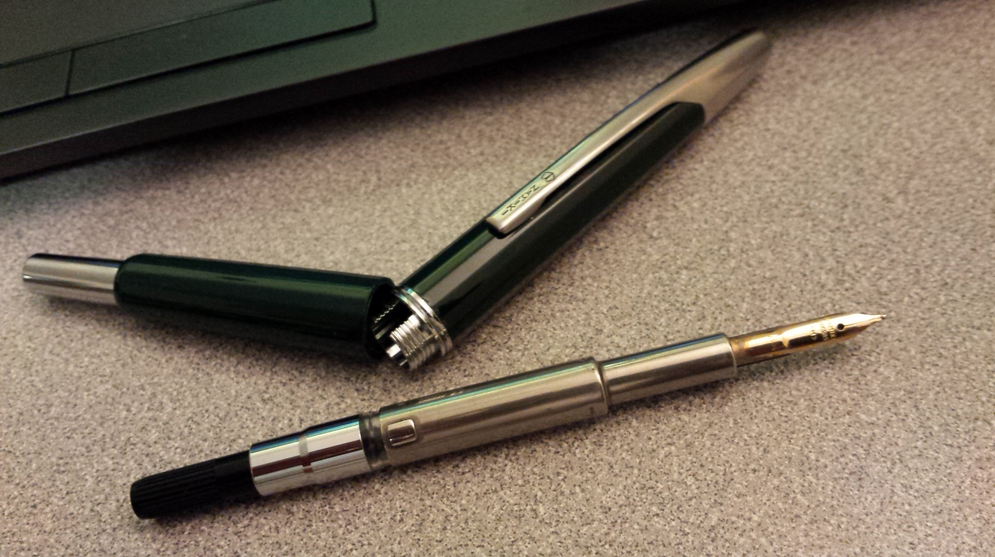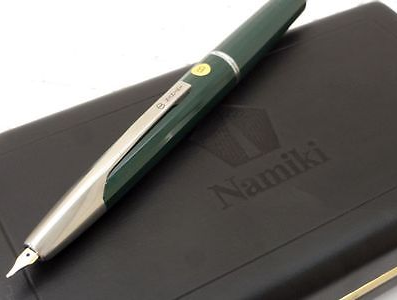No, not the sometimes difficult search for the intent of a written article, but a unique type of fountain pen. One of the drawbacks to using a fountain pen is that the nib will transfer ink to whatever it touches, whether you like it or not. So most all fountain pens have caps to keep the ink from writing a blob on your shirt when you put the pen in your pocket.
But people being clever (some more than others) have designed a fountain pen that doesn’t need a cap – it’s called “Capless”. The company Namiki, which is now called “Pilot” has a retractable fountain pen called the Vanishing Point, or Capless, depending on the ad you’re reading. It has gone through a few iterations since it’s inception, and it is a high quality pen.
How it works is fairly simple. The nib and ink are a unit that fits inside the pen, very similar to the ink cartridge in a ballpoint pen. There is a button that pushes the nib unit out of the pen so that you can write with it. But fountain pen inks are not formulated like ballpoint pen inks, and if left exposed, the nib will dry out. So the very smart people at Namiki/Pilot designed a little door they call a shutter that is spring loaded to close when the nib is retracted to seal the nib and prevent it from drying out. Pretty smart, huh?

Well, it works. And it works very well. The nibs are made from 14k or 18k gold and are very well made, writing very smoothly. And like most fountain pens, you can have a nibmeister regrind the nib to your exact requirements. The only drawback to this design is that the mechanism takes up space inside the barrel, so the ink capacity isn’t great. They also accept ink cartridges, so you can carry an extra cartridge with you and replace an empty one in just a few seconds.
A unique solution to a problem. Here you can see the nib extended for writing.

